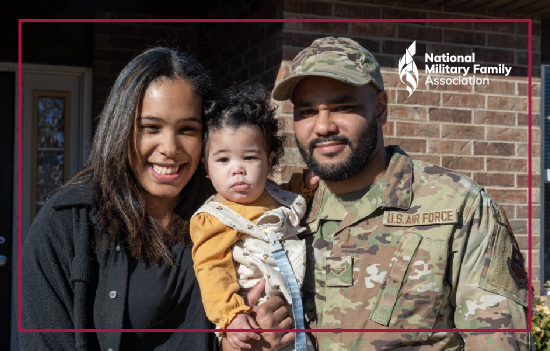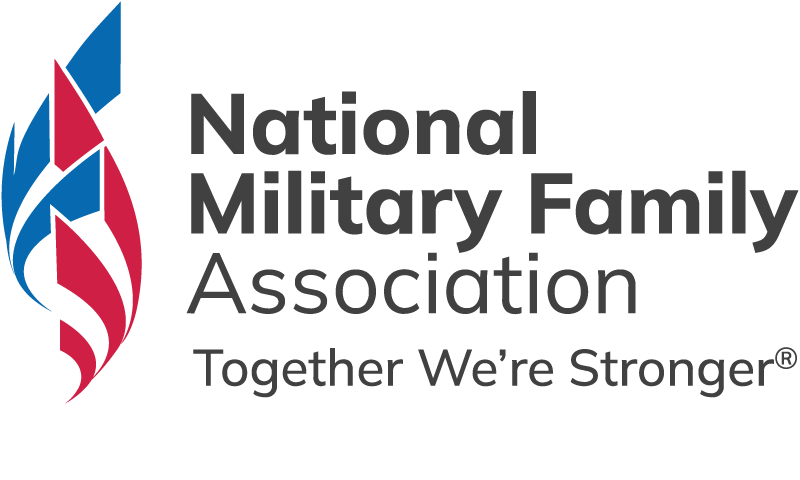FY 2025 NDAA: Many Wins, a Few Disappointments for Military Families

On December 23, President Biden signed the Fiscal Year 2025 National Defense Authorization Act (NDAA), the massive annual bill that sets policies for the Department of Defense. This year’s NDAA was especially significant for military families. It includes many of the recommendations of the House Armed Services Committee’s Quality of Life panel, including provisions NMFA advocated for that address compensation, child care, spouse employment, and more.
Wondering what all of this means to your military family? Let’s break down what was included, what was left out, and what NMFA will be advocating for in 2025:
Pay and Compensation: A Big Win for Families
For years, we’ve been telling Congress that too many military families are struggling financially. Military pay hasn’t kept up with the rising cost of living, making it hard for families to make ends meet. We’re thankful that Congress listened to us. This year’s NDAA includes 4.5% across the board pay increase, which took effect on January 1. In addition, service members in grades E-1 to E-4 will receive a 10% pay bump starting on April 1, as will a roughly 7% increase for E-5 service members with less than 10 years of service.
Far too often, military families facing financial challenges find it hard to even put food on the table. That’s simply unacceptable for families who serve and sacrifice so much to protect our country. We’ve advocated to increase access to the Basic Needs Allowance, a targeted pay boost for families whose income and household size place them below 150% of federal poverty guidelines. This year, Congress increased the eligibility threshold to 200% of federal poverty guidelines. We’re hopeful that this change will allow more families to receive this much needed assistance.
Spouse Employment and Child Care
Making it easier for military spouses to build and maintain their careers is essential to the long-term financial stability of military families. Improved access to affordable, high-quality child care is a key part of that equation. The FY 2025 NDAA includes provisions addressing both of those issues. Highlights include:
- Full funding for the Services’ child care fee assistance programs, to eliminate waitlists and help families afford child care in their communities
- Addressing staffing challenges faced by DoD Child Development Centers (CDC) by making employees’ pay competitive with providers in civilian day care centers and offering no cost child care to CDC employees
- Establishes procedures for interstate reciprocity of professional licenses, making it easier for spouses to reestablish their careers following a PCS move
- Expands eligibility for CDC care for military spouses seeking employment
- Permanently authorizes the Military Spouse Career Accelerator program, a competitive program that offers paid 12-week fellowships to military spouses in a variety of industries and locations
Maternal Mental Health Care
Pregnancy and the postpartum period can be especially challenging for service women and military spouses, who may be far from friends and family and even their spouse or partner. We are gratified Congress recognized the mental health challenges that can come with pregnancy and directed DoD to establish a pilot program at selected Military Treatment Facilities (MTFs) addressing perinatal mental health care.
Military Kids’ Education
We appreciate that Congress once again authorized DoD Impact Aid funds to support local school districts serving large numbers of military-connected children. This year, Congress authorized $50 million for this essential assistance, with an additional $20 million to support schools serving military kids with special needs. These funds will help ensure that the school districts serving military families can offer the high-quality education our children need and deserve.
Where Congress Fell Short: Our Priorities for 2025
While this year’s NDAA included many provisions that will enhance military families’ quality of life, there is still work to be done to help military families thrive. We were especially disappointed that several of our key health care related priorities failed to make it into the final bill.
In 2025, we’re urging Congress to address these issues affecting military families:
- Coverage of assisted reproductive technology, including IVF. Currently TRICARE only covers fertility treatment in very limited circumstances, forcing families to pay out of pocket for access to needed reproductive health care. We were disappointed that Congress failed to include a provision requiring TRICARE to cover reproductive technology, especially since this coverage will be available to federal civilian employees starting in 2025.
- Pregnancy as a Qualifying Life Event (QLE). We know that access to obstetric care is limited in some locations. Allowing a TRICARE beneficiary to switch plans during pregnancy will help ensure pregnant moms can access the right care at the right time.
- TRICARE coverage for young adults up to age 26. Currently TRICARE only covers young adult dependents up to age 21, or 23 if they are enrolled in college. Conversely, civilian plans cover young adult dependents up to age 26 at no additional cost. It’s time for Congress to undo this inequity and cover young adult military dependents up to age 26.
Finally, we were concerned by language in the NDAA that appears to limit the care available to military-connected kids who are diagnosed with gender dysphoria. Our priority is always to ensure that TRICARE coverage is on par with care offered by top civilian plans, and to make sure that military families have access to needed health care. We are urging DoD to implement the language in such a way that military medical providers and parents can make the best decisions for kids in their care.
What are your thoughts on this year’s NDAA? What issues are affecting your military family? Share your story with us!





